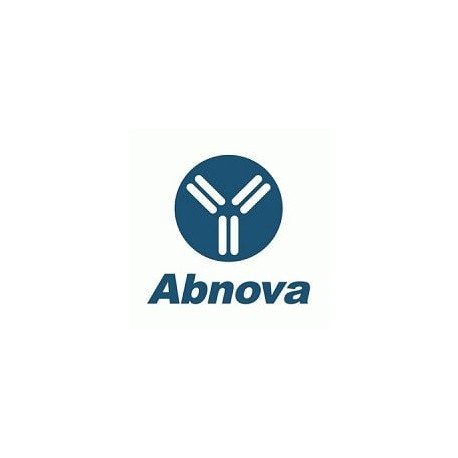Cart 0 Product Products (empty)
No products
To be determined Shipping
0,00 € Total
Prices are tax excluded
Product successfully added to your shopping cart
Quantity
Total
There are 0 items in your cart. There is 1 item in your cart.
Total products (tax excl.)
Total shipping (tax excl.) To be determined
Total (tax excl.)
Data sheet of CCND1 polyclonal antibody
| Brand | Abnova |
| Product type | Primary antibodies |
| Reactivity | Chicken,Chimpanzee,Dog,Frog,Human,Mouse,Orangutan,Rat |
| Host species | Rabbit |
| Applications | IP,ELISA,WB-Ce |
More info about CCND1 polyclonal antibody
| Brand: | Abnova |
| Reference: | PAB9944 |
| Product name: | CCND1 polyclonal antibody |
| Product description: | Rabbit polyclonal antibody raised against synthetic peptide of CCND1. |
| Gene id: | 595 |
| Gene name: | CCND1 |
| Gene alias: | BCL1|D11S287E|PRAD1|U21B31 |
| Gene description: | cyclin D1 |
| Immunogen: | A synthetic peptide corresponding to human CCND1. |
| Protein accession: | P24385;NP_444284 |
| Form: | Liquid |
| Recommend dilutions: | ELISA (1:2000-1:10000) Western Blot (1:500-1:1000) The optimal working dilution should be determined by the end user. |
| Storage buffer: | In antiserum (0.01% sodium azide) |
| Storage instruction: | Store at 4°C. For long term storage store at -20°C. Aliquot to avoid repeated freezing and thawing. |
| Quality control testing: | Antibody Reactive Against Synthetic Peptide. |
| Note: | This product contains sodium azide: a POISONOUS AND HAZARDOUS SUBSTANCE which should be handled by trained staff only. |
| Product type: | Primary antibodies |
| Host species: | Rabbit |
| Antigen species / target species: | Human |
| Reactivity: | Chicken,Chimpanzee,Dog,Frog,Human,Mouse,Orangutan,Rat |
| Application image: |  |
| Application image note: | Western blot analysis is shown using CCND1 polyclonal antibody (Cat # PAB9944) to detect Human CCND1 present in asynchronous HN30 cell lysates. HN30 cells, are from head and neck cancer cells that over express CCNB1 and CCND1. Comparison to a molecular weight marker indicates a band of ~34 KDa corresponding to the expected molecular weight for the protein (arrowhead). The blot was incubated with a 1 : 500 dilution of the antibody at room temperature. Detection occurred using a 1 : 10,000 of HRP conjugated Goat-anti-Rabbit IgG. |
| Applications: | IP,ELISA,WB-Ce |
| Shipping condition: | Dry Ice |
| Publications: | A novel cyclin encoded by a bcl1-linked candidate oncogene.Motokura T, Bloom T, Kim HG, Juppner H, Ruderman JV, Kronenberg HM, Arnold A. Nature. 1991 Apr 11;350(6318):512-5. |


